Solar eclipse of November 3, 1994
| Solar eclipse of November 3, 1994 | |
|---|---|
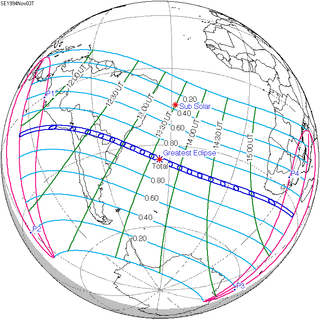 Map | |
| Type of eclipse | |
| Nature | Total |
| Gamma | -0.3522 |
| Magnitude | 1.0535 |
| Maximum eclipse | |
| Duration | 263 sec (4 m 23 s) |
| Coordinates | 35°24′S 34°12′W / 35.4°S 34.2°W |
| Max. width of band | 189 km (117 mi) |
| Times (UTC) | |
| Greatest eclipse | 13:40:06 |
| References | |
| Saros | 133 (44 of 72) |
| Catalog # (SE5000) | 9496 |
A total solar eclipse occurred on November 3, 1994. A solar eclipse occurs when the Moon passes between Earth and the Sun, thereby totally or partly obscuring the image of the Sun for a viewer on Earth. A total solar eclipse occurs when the Moon's apparent diameter is larger than the Sun's, blocking all direct sunlight, turning day into darkness. Totality occurs in a narrow path across Earth's surface, with the partial solar eclipse visible over a surrounding region thousands of kilometres wide.
Images

Related eclipses
Solar eclipses 1993-1996
Each member in a semester series of solar eclipses repeats approximately every 177 days and 4 hours (a semester) at alternating nodes of the Moon's orbit.
| Descending node | Ascending node | |||
|---|---|---|---|---|
| Saros | Map | Saros | Map | |
| 118 | May 21, 1993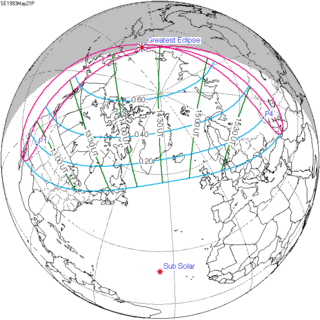 Partial |
123 | November 13, 1993 Partial | |
| 128 | May 10, 1994 Annular |
133 | November 3, 1994 Total | |
| 138 | April 29, 1995 Annular |
143 Totality at Dundlod, India | October 24, 1995 Total | |
| 148 | April 17, 1996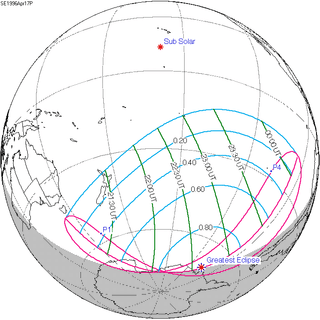 Partial |
153 | October 12, 1996 Partial | |
Saros 133
Solar Saros 133, repeating every 18 years, 11 days, contains 72 events. The series started with a partial solar eclipse on July 13, 1219. It contains annular eclipses from November 20, 1435, through January 13, 1526, with a hybrid eclipse on January 24, 1544. It has total eclipses from February 3, 1562, through June 21, 2373. The series ends at member 72 as a partial eclipse on September 5, 2499. The longest duration of totality was 6 minutes, 50 seconds on August 7, 1850.[1] The total eclipses of this saros series are getting shorter and farther south with each iteration.
| Series members 30-49 occur between 1742 and 2100 | ||
|---|---|---|
| 30 | 31 | 32 |
| June 3, 1742 | June 13, 1760 | 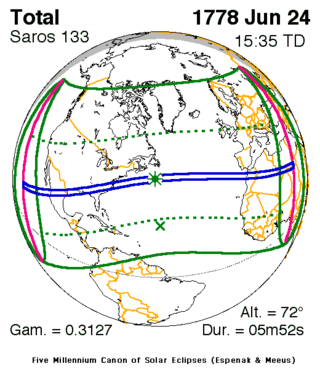 June 24, 1778 |
| 33 | 34 | 35 |
| July 4, 1796 | July 17, 1814 | July 27, 1832 |
| 36 | 37 | 38 |
| August 7, 1850 | 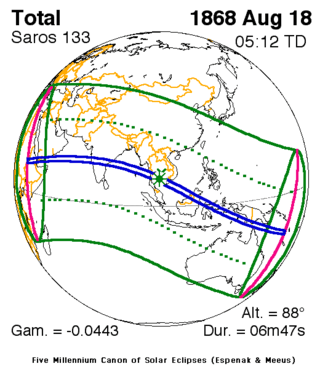 August 18, 1868 |
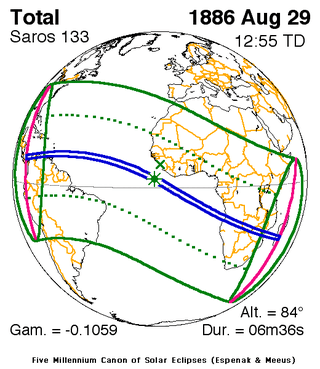 August 29, 1886 |
| 39 | 40 | 41 |
 September 9, 1904 |
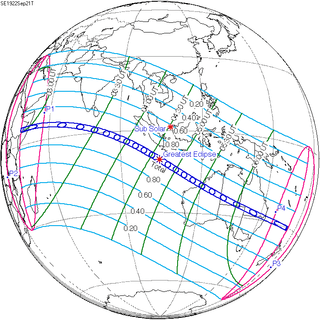 September 21, 1922 |
 October 1, 1940 |
| 42 | 43 | 44 |
 October 12, 1958 |
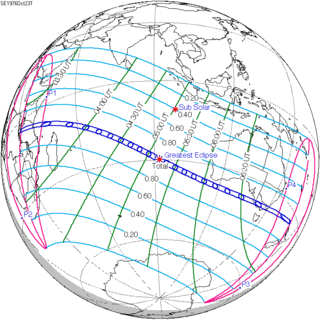 October 23, 1976 |
 November 3, 1994 |
| 45 | 46 | 47 |
 November 13, 2012 |
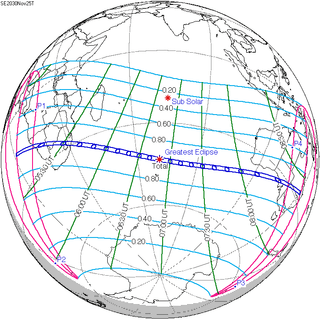 November 25, 2030 |
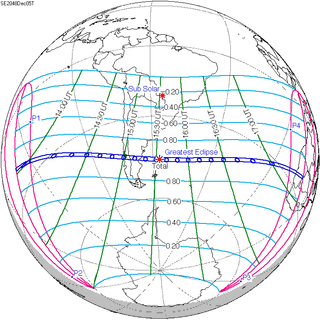 December 5, 2048 |
| 48 | 49 | 50 |
 December 17, 2066 |
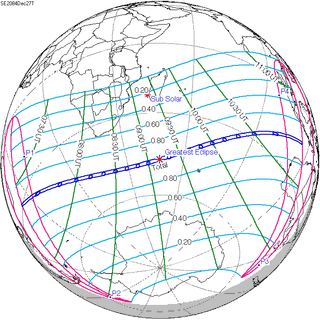 December 27, 2084 |
January 8, 2103 |
Metonic series
The metonic series repeats eclipses every 19 years (6939.69 days), lasting about 5 cycles. Eclipses occur in nearly the same calendar date. In addition the octon subseries repeats 1/5 of that or every 3.8 years (1387.94 days).
| 21 eclipse events, progressing from north to south between June 10, 1964 and August 21, 2036 | ||||
|---|---|---|---|---|
| June 10–11 | March 27–29 | January 15–16 | November 3 | August 21–22 |
| 117 | 119 | 121 | 123 | 125 |
 June 10, 1964 |
 March 28, 1968 |
 January 16, 1972 |
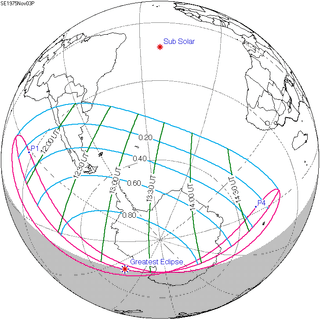 November 3, 1975 |
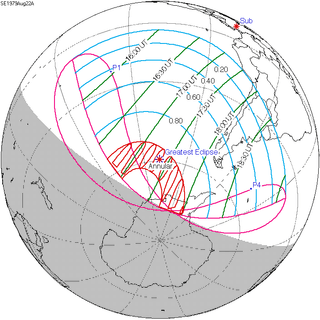 August 22, 1979 |
| 127 | 129 | 131 | 133 | 135 |
 June 11, 1983 |
 March 29, 1987 |
 January 15, 1991 |
 November 3, 1994 |
 August 22, 1998 |
| 137 | 139 | 141 | 143 | 145 |
 June 10, 2002 |
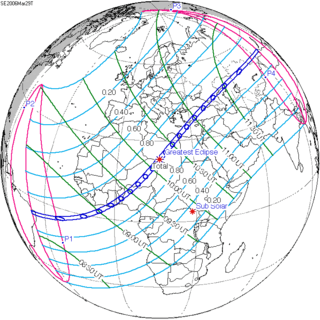 March 29, 2006 |
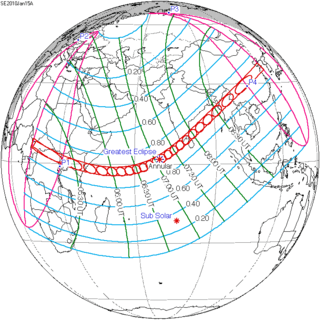 January 15, 2010 |
 November 3, 2013 |
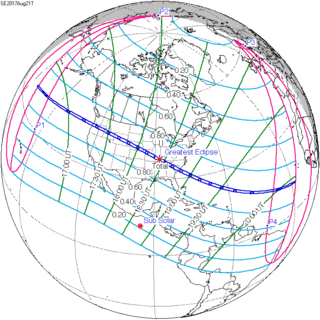 August 21, 2017 |
| 147 | 149 | 151 | 153 | 155 |
 June 10, 2021 |
 March 29, 2025 |
 January 14, 2029 |
 November 3, 2032 |
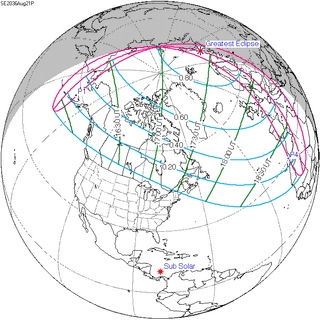 August 21, 2036 |
References
External links
- Earth visibility chart and eclipse statistics Eclipse Predictions by Fred Espenak, NASA/GSFC
Photos:
- Chile and Brazil, Prof. Druckmüller's eclipse photography site
- Bolivia, Prof. Druckmüller's eclipse photography site
- ON THE STRUCTURE OF 3.11.94 ECLIPSE CORONA
- Solar Corona Shape
- The 1994 Eclipse in Chile
| Wikimedia Commons has media related to Solar eclipse of 1994 November 3. |
